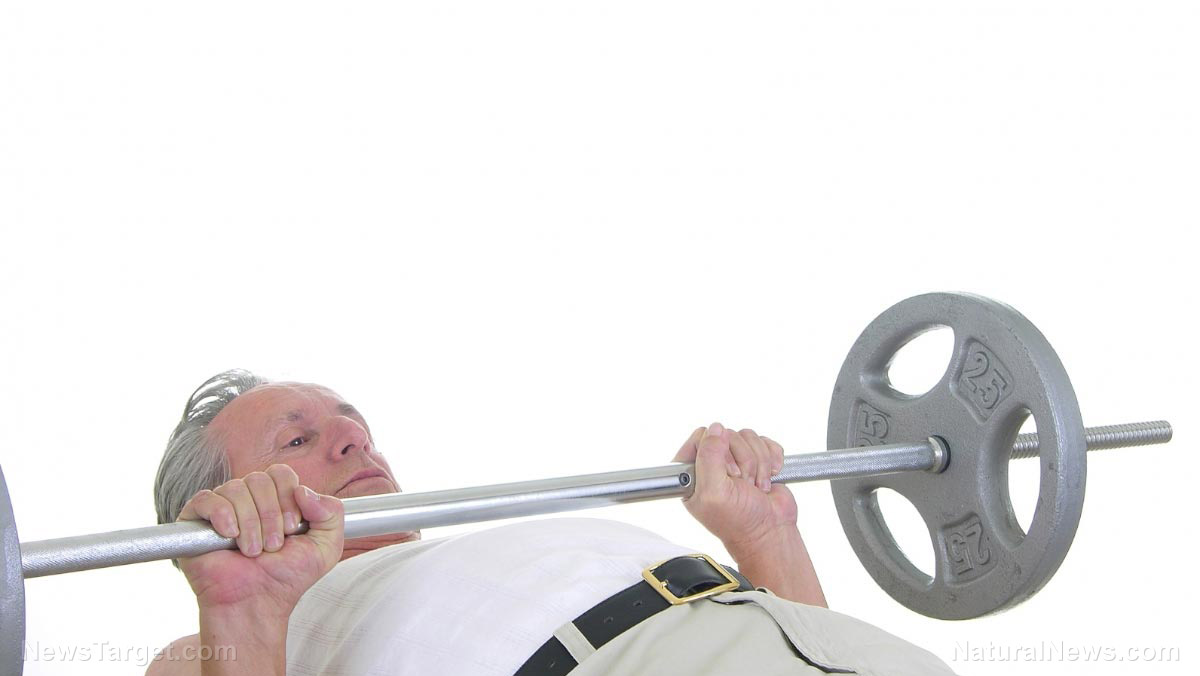A fit body makes a healthy heart: Research says regular exercise can reduce your risk of heart attacks by HALF
04/14/2019 / By Evangelyn Rodriguez

“Fitness” can mean a lot of things. There’s physical fitness, which pertains to health and the proper functioning of a human body – and there’s biological fitness, which has more to do with an organism’s ability to reach reproductive age. And there’s also cardiorespiratory fitness (CRF) – fitness related to heart health.
According to Bjarne Nes, author of a study on the relationship between CRF and coronary heart disease (CHD), “Fitness isn’t just a measure of how much you’ve trained in your life, it also tells you what kind of genes you have. Other factors like obesity may also affect fitness… both genes and physical activity play a role in how your heart and blood vessels function.”
In a study published in the European Heart Journal, Nes and several colleagues showed that people who are not fit are at great risk of CHD, even though they may not have any of the symptoms. They used cardiopulmonary exercise testing (CPET) to measure the peak oxygen uptake of the participants and determine their level of fitness.
Why peak oxygen uptake is a good measure of fitness
Peak oxygen uptake is the maximum amount of oxygen the body is capable of absorbing while doing a physical activity. Oxygen is vital for metabolism, and metabolism provides the energy needed by the muscles. Hence, the more intense the activity is, the more oxygen the body needs. People with heart problems, however, require less oxygen because heart conditions prevent the heart rate from increasing. Without this increase, oxygen delivery and consumption are limited. It makes sense then that the people who were less fit – and had higher risk of CHD – absorbed less oxygen during CPET. Using CPET as part of medical checkups, therefore, could benefit people because it can warn them of their cardiovascular risk.
How fitness affects cardiovascular risk
Between 2006 to 2008, the entire county of Nord-Trøndelag in Norway participated in a health study called HUNT3. From the participants, the researchers selected people without any history of cardiovascular disease and lung disease and invited them to participate in CPET. A total of 4,527 people completed the test, which involved running on a treadmill while wearing a special mask that measured their peak oxygen uptake. The speed was steadily increased by the minute and the test was only stopped when the participants could no longer run or their oxygen uptake was no longer increasing.
By 2017, 147 of the test participants had experienced heart attacks or were diagnosed with angina pectoris (chest pain due to blocked arteries). Upon comparison of their CPET results, the researchers noted that those who developed heart problems had lower peak oxygen uptake values than those who remained healthy. Furthermore, when they considered factors such as age and gender, they noticed a steady decline in CHD risk as their fitness level increased. These findings suggested that a person’s fitness level directly affects their cardiovascular risk and that peak oxygen uptake is a good measure of a person’s fitness.
Half your risk of heart attack
“Even among people who seem to be healthy, the top 25 percent of the most fit individuals actually have only half as high a risk as the least fit 25 percent,” one of the study’s authors said. If that is the case, then people who want to half their risk of CHD should get in good shape. Maintaining a healthy lifestyle and regular exercise may be the key. The American Heart Association recommends a minimum of 150 minutes per week of moderate-intensity exercise for adults. The first author of the study, Jon Letnes, who is also a doctor, suggests the same thing for effective risk reduction. After all, their study showed that higher fitness levels translated to better heart health. (Related: Cut Your Heart Attack Risk Dramatically by Simply Eating More Berries.)
ReverseHeartDisease.news has more studies and news stories discussing cardiovascular risk and how to keep your heart healthy.
Sources include:
Tagged Under: alternative medicine, cardiopulmonary exercise testing, cardiorespiratory fitness, cardiovascular risk, coronary heart disease, disease treatments, exercise, fitness, heart attack, heart health, natural cures, natural medicine, prevention, remedies, research, slender



















